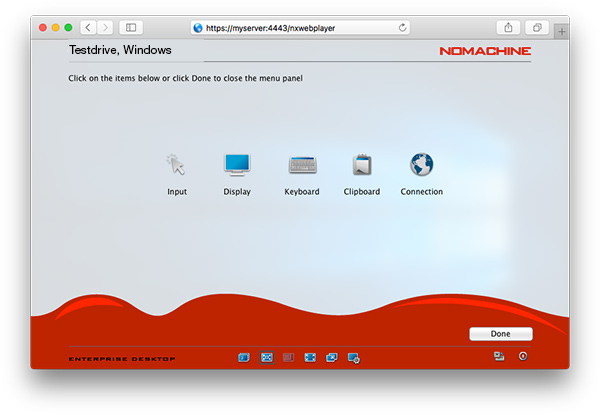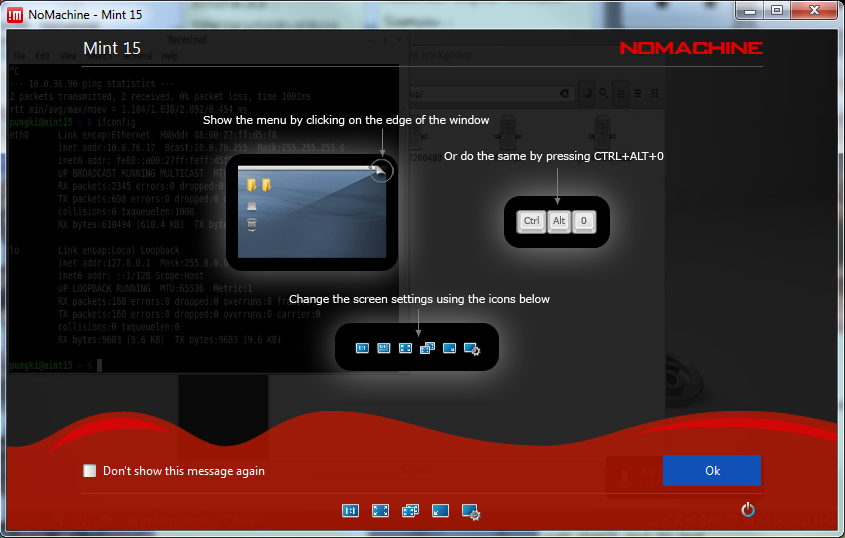



Record what you do: Make a video of what you do on-the-fly.Use any device: Your folders, drives and devices, travel across machines in a snap.

Meet with others where you work: Let your friends collaborate on the documents you are working on, share the files you need, help troubleshooting the problems you are experiencing.Work with any content: Enjoy live audio and video from your remote PC.Travel to any desktop: Travel from your desktop to any NoMachine-enabled computer at the speed of light.Moreover, NoMachine is a proven Hosted Desktop and Remote Access Solution that helps you Consolidate and Deliver all your Desktops and Applications.įinally, the NoMachine main Features are: NoMachine has a feature where it can span the host display(s) across the guest's displays, but by enabling that, it just spanned a single 2880x1800 screen across my 3 monitors, which essentially means I would have to plug in 3 identical monitors to my MacBook, if I wanted the same experience on my Windows PC.You are Welcome! The Tutorial shows you Step-by-Step How to Install and Getting-Started with NoMachine Free Remote Desktop Software in Deepin GNU/Linux Desktop.įirst, NoMachine for Deepin let Mobile Staff Connect to their Office PC with Full Access to their Data and Applications, Facilitate Collaboration between Employees, Enable Fast, Effective Remote Assistance via the Desktop. My guess would be RDP, as that's what Windows uses, but I haven't found a single software on macOS that claims it can create "fake virtual displays". What is the difference between all of these different protocols? I've read about VNC, RDP, NX, and probably a few others, but I haven't been able to find the exact search term, that allows me to find a macOS program, that allows it to create "fake virtual displays", like Windows essentially does. The resolution is 2880x1800, which matches the MacBook's resolution. If I instead use VNC Viewer, Remotix, NoMachine, and programs like that, and I connect my main PC with 3 monitors to my MacBook Pro, I can only see 1 monitor/screen. If I right click on my desktop and pick Display settings, it actually shows 3 monitors connected, even though the laptop only has 1. There is a free version (which will be the version we discuss here) that has pre-compiled binaries for Red Hat flavors and Debian flavors as well as a source download. Check out the download page for more information. When I use the RDP client in Windows on my main PC and I connect to my Windows laptop, it acts exactly like if I connect the 3 monitors to the laptop directly. Simple, NoMachine offers the most dependable, configurable, user-friendly means of managing remote connections for the Linux desktop. My Windows laptop has 1 monitor (built-in). As far as I know from my testing, I need to use VNC if I want to mirror the exact configuration of the host (1 monitor = 1 monitor gets mirrored), and RDP if I want something else (like "fake virtual screens"). I've been trying for way too many hours now to get a similar remote desktop experience as Windows -> Windows, but on Windows -> macOS.


 0 kommentar(er)
0 kommentar(er)
